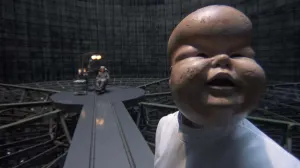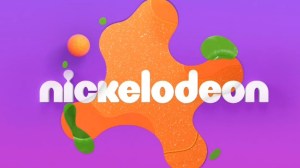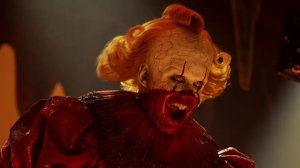DC’s Absolute Universe got its Superman this week with the release of Jason Aaron and Rafa Sandoval’s Absolute Superman #1 and while this new version of Superman does have some major differences from his main universe counterpart — differences that aren’t just limited to the heroic figure himself but the world he hails from and more — there are some huge similarities as well. Perhaps the largest of those similarities is just how moral and to an extent political the message conveyed by character’s story and actions are. Absolute Superman #1 gives readers who, despite not being the Man of Steel they’re familiar with, is still fighting for justice in ways they can easily recognize.
Videos by ComicBook.com
Warning: spoilers for Absolute Superman #1 beyond this point.
In Absolute Superman #1 we’re introduced to Krypton before its destruction and while this version of Krypton is the highly advanced society willfully blind to their own impending doom with Jor-El a dissenting voice, it’s also not the Krypton we know. This Krypton has a strict caste system and neither Jor-El nor Lara are in the upper caste and, therefore are not respected scientists. Instead of being a part of the Science League with their wealth and luxury and power at the top, the Jor-El and Lara are part of the Labor Guild, the lowest class of Kryptonian, both of them there for speaking out against Krypton’s policies at different points in their younger lives. This leads the family to live a lower working-class life with Lara as a farm mechanic and Jor-El a safety inspector in the mines. It’s also worth noting that in this Krypton, the S that is so familiar as the symbol of the House of El is instead the symbol of the Labor Guild, a literal symbol marking them being among the exploited and oppressed working class. Of course, Krypton’s fate is headed the same direction with the planet in danger but this version of the story sees young Kal-El not sent away from Krypton as a baby, but with his parents as a young boy.
[RELATED: Absolute Superman #1 Review: When Superpowers Become a Force To Be Reckoned With]
We aren’t told exactly how or why Kal-El ends up on Earth, but he does and, in the present day he’s a refugee, currently among some Brazilian mine workers forced to work in the diamond mines for the brutal and ruthless Lazarus Corporation. The Lazarus Corporation is, in a very real sense, the villain here. The working conditions of the poor, exploited, and oppressed miners are horrific and it is suggested that the conditions in the overall village are not much better. Lazarus Corporation has a militaristic presence and there is absolutely no regard for the safety of the workers or their families. Seeing this, Kal-El covertly acts to aid the miners by removing the lethal asbestos in the mine that has been showering the miners and the village like snow as part of the mining process as well as by speeding up the process of their work by filling their carts with diamonds. While this does, in the short term, help the miners, it only serves to create problems with Lazarus Corporation who don’t take kindly to their exploited workers being aided and attack him with Peacemakers — especially after realizing he’s the same mysterious Superman who has done similar acts at other mining locations in Botswana and Dharavi. This Superman is a hero of the workers — and that doesn’t sit well with the presumably corrupt corporation.
Absolute Superman’s Heroics Are Fundamentally the Same
While the circumstances and details of Absolute Superman’s story are different than the main universe hero readers know, fundamentally the actions of the character are not. Throughout his nearly 90-year publication history, Superman has always been protective of Earth and its people, standing up for the common man against threats — including those posed by those with great power who use it to oppress those without. Superman has always taken on threats such as fascists, racists, evil corporations, corrupt politicians and more in addition to otherworldly threats. It’s the character’s sense of justice and his strong moral code that is perhaps his most defining feature and, as such, makes him a genuine hero of the people.
Quite literally from the very beginning — and by that, I mean Action Comics #1 from 1938 so the absolute beginning — Superman has taken up the causes of the oppressed or underrepresented. The issue sees the hero saving an innocent woman from execution, going after a man who abuses his wife, saving Lois Lane from a gangster who couldn’t take no for an answer, and even going to Washington D.C. to investigate a potentially corrupt lawmaker. There’s also a parallel in early Superman stories to Absolute Superman #1 when in Action Comics #3 from 1938, Superman teaches a greedy and corrupt mine owner a major lesson with a mine collapse so the owner learns a valuable lesson about mine safety and the safety of his workers. There is simply no shortage of stories in those early years of Superman looking out for the common man, but we also still see that same spirit in more contemporary tales as well — please see the entire Warworld Saga story arc where, as part of the story, Superman stands up for those imprisoned on Warworld, even fighting Mongul in the process. The only real difference between Superman as we’ve always known him and Absolute Superman is the lines in which he operates and we’re still early in Absolute Superman’s story so that will continue to play out as that same drive towards justice goes forward.
And generally, that appears to be the point, if you will, of reimagined heroes of the Absolute Universe. While their origins and paths to being a hero is different from their main universe counterparts – something we’ve seen with Absolute Batman who comes from a working-class background rather than wealth and Absolute Wonder Woman who was raised in Hell instead of with the Amazonians – their core values are much the same. There’s a message in that itself if you think about it: it doesn’t matter where you come from, you can still do good.
Absolute Superman #1 is on sale now.








